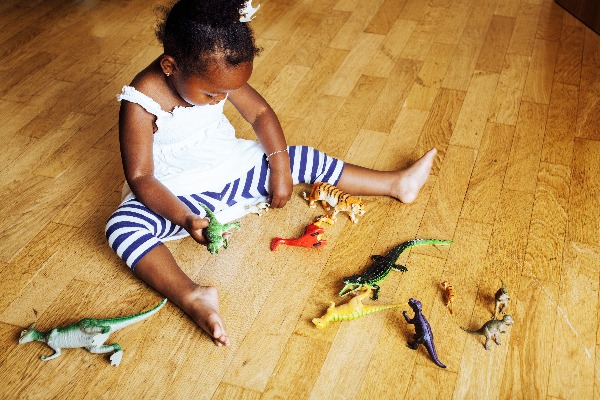This resource is from the High Scope newsletter.
Many of us remember when we could go outside and play until the street lights came on or, in more inclement weather, when we played make-believe games with a friend in our bedroom or build things out of items we found lying around the house.
Sadly, a daily time for children to freely choose what they want to do, whether indoors or outdoors, is in jeopardy. More and more, outdoor play is perceived as being too dangerous for children, so children are cooped up in their homes (Metro- com International, 2007). Both at home and at school, children are bombarded by television, DVD and computer games, violent toys that inhibit imaginative play, extracurricular activities, and academic pressure. Needless to say, little time is being allocated to creative play.

Among the greatest threats to children’s creative play are television, video and DVD games, and computers. When children are mindlessly watching a screen, they are not engaging all of their sens- es. According to the Alliance for Childhood, children spend four-and-a-half hours per day involved in these activities (July 2009). Following a study connecting television watching with attention problems, the American Academy of Pediatrics (AAP; 2001) has recommended that young children — espe- cially those under three who are in the formative years of brain development — have no exposure to television, as a preventative measure against attention problems and subsequent risk of attention de cit-hyperactivity disorder (ADHD) (Christakis, Zimmerman, DiGiuseppe, & McCarty, 2004). Yet studies cited by AAP and the White House Task Force on Childhood Obesity (2010) show 43% of children under age two watch television daily, and 90% of children aged 4 to 6 use screen media an average of two hours per day.
A position statement by the National Association for the Education of Young Children (NAEYC), asserts that “research demonstrates that watching violent programs is related to less imaginative play and more imitative play in which the child simply mimics the aggressive acts observed on television” (The National Institute of Mental Health, 1982, as cited in NAEYC, 1994, p. 2). Furthermore, the majority of toys that children play with tend to be violent and expensive toys based on media pro- grams and which encourage children to reenact the aggressive behaviors they see on television, in commercials, or in movies. As children spend more time with media and items that promote violence, the less time they are engaged in activities that help them process violence. “Thus, as the need to work through violence increases, children’s ability to work it through can be seriously impaired” (Levin, 2007, p. 3).
Another major threat to play is pressure to introduce academics. In Crisis in The Kindergarten (Miller & Almon, 2009), the authors argue that children are spending the majority of their day in literacy and math instruction and in standardized testing and test preparation, leaving less than 30 minutes (and sometimes no time at all) in play or choice time. The same restrictions and pressures are being placed on preschoolers. Research shows that the knowledge gained through this type of “cramming” and early pressure to learn ABCs and 123s fades by fourth grade (Miller & Almon, 2009).